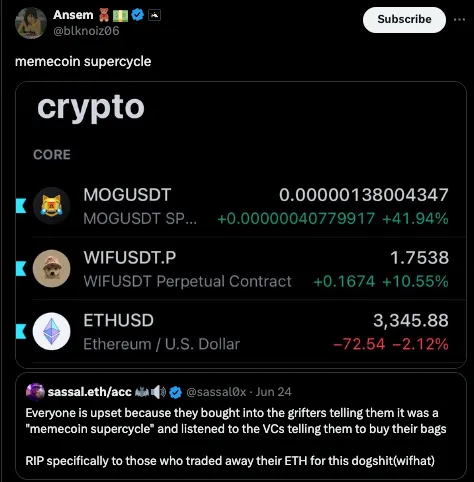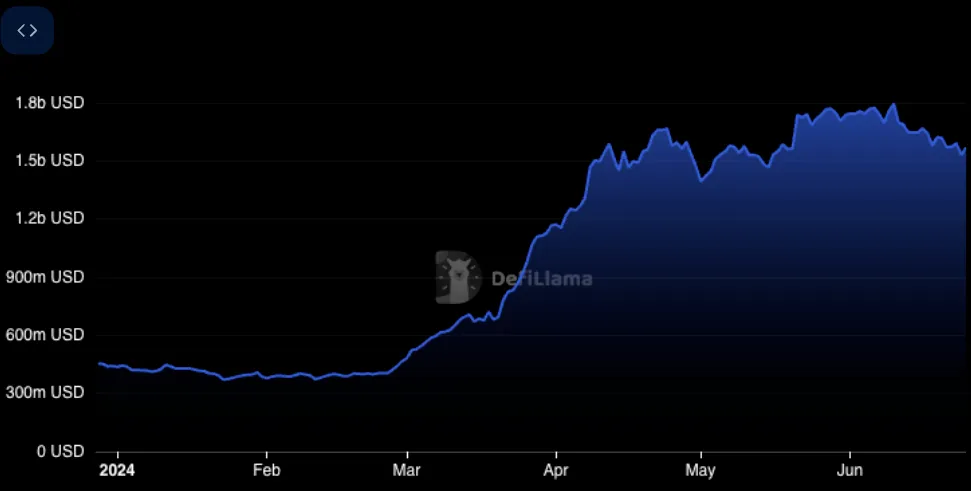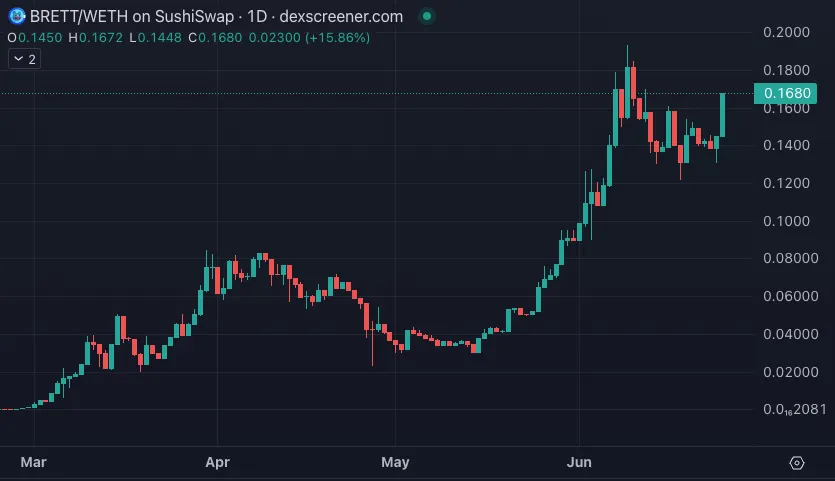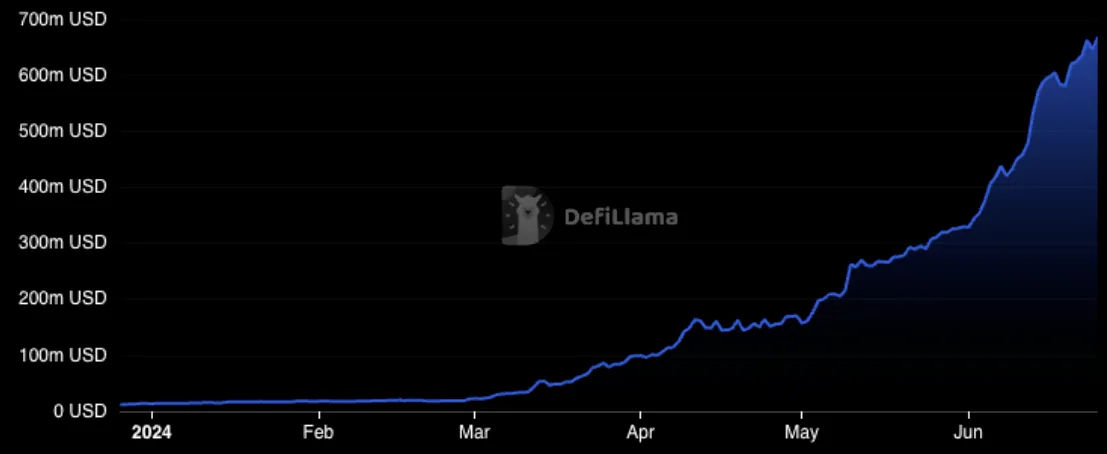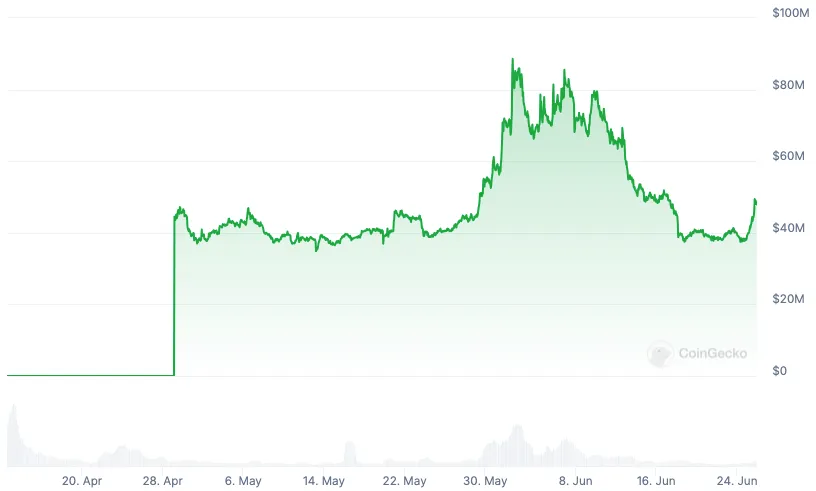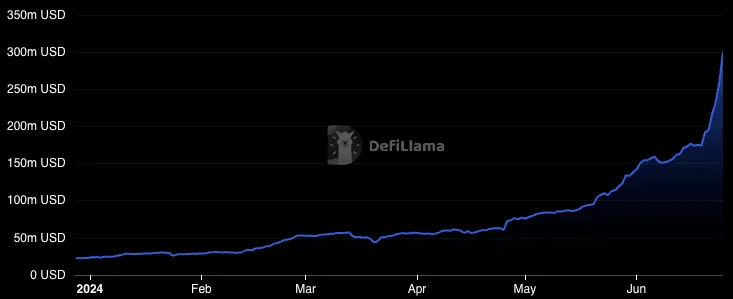จะเลือกเหรียญ Meme ที่มีศักยภาพตามการเปลี่ยนแปลง TVL ได้อย่างไร
ผู้เขียนต้นฉบับ: ชาร์ลส์
ต้นฉบับแปล: TechFlow
บางคนเรียกวงจรนี้ว่า “วงจรเมมคอยน์” และบางคนยังเรียกมันว่า “ซูเปอร์ไซเคิลเมมคอยน์” เราได้เห็นเมมคอยน์ใหม่ๆ เช่น WIF พุ่งสูงจากศูนย์จนมีมูลค่าตลาดหลายพันล้านดอลลาร์ในเวลาไม่กี่เดือน นอกจากนี้ เรายังได้เห็นผลิตภัณฑ์ต่างๆ ที่สร้างขึ้นจากปรากฏการณ์เมมคอยน์ เช่น การเปิดตัว ปั๊มสนุก ชอบหรือไม่ก็ตาม memecoin ไม่สามารถถูกละเลยได้
ผู้เล่นคริปโตที่กระตือรือร้นส่วนใหญ่มักจะตระหนักดีว่า memecoin นั้นมีผลงานที่ดีมากในรอบนี้ โดยทำผลงานได้ดีกว่าเหรียญอื่น ๆ อย่างมาก เมื่อเราได้ยินเรื่องราวของนักเทรดที่ทำเงินได้หลายเหรียญจาก memecoin คำถามก็คือ "พวกเขาระบุ memecoin นั้นได้อย่างไร" แน่นอนว่ามีอคติในการเอาตัวรอดอยู่บ้าง แต่มีปัจจัยอื่น ๆ ที่ส่งผลต่อเรื่องนี้หรือไม่
โดยทั่วไปแล้วที่ HFAResearch เราเน้นที่แนวคิดที่ขับเคลื่อนโดยปัจจัยพื้นฐานจากมุมมองการลงทุน การซื้อขาย และการขุด ซึ่งทำให้เราไม่สามารถครอบคลุมภาคส่วน memecoin ได้ – เช่นเดียวกับ NFT ตรรกะการลงทุนของ memecoin มักจะคลุมเครือมากกว่าและขึ้นอยู่กับบรรยากาศและมีมเองมากกว่า ซึ่งทำให้การวิเคราะห์ปัจจัยพื้นฐานทำได้ยากขึ้น อย่างน้อยนี่คือสิ่งที่เราคิดก่อนที่เราจะค้นพบสิ่งที่เราเรียกว่าทฤษฎีดึง TVL ของ Memeccoin
ทฤษฎีการปั๊ม TVL ของ Memecoin ระบุว่า memecoin หลักหรือตะกร้าของ memecoin หลักจะทำหน้าที่เป็นการเดิมพันแบบเลเวอเรจสำหรับ TVL บนเชน ก่อนที่เราจะแสดงรายการตัวอย่างต่างๆ จากอดีต เรามาทำความเข้าใจกันก่อนว่าเหตุใดสิ่งนี้จึงสมเหตุสมผล
เราทราบดีว่าเมื่อ TVL บนเครือข่ายเพิ่มขึ้น เงินจำนวนหนึ่งจะไหลเข้าสู่แอปพลิเคชันหรือจุดหมายปลายทางบางแห่งบนเครือข่ายนั้น เช่น X% จะไหลไปยังตลาดเงิน Y% จะไหลไปยังตลาดแลกเปลี่ยนแบบกระจายอำนาจหลัก (DEX) เป็นต้น ดังนั้น จึงสมเหตุสมผลที่จะสันนิษฐานว่าเงินจำนวนเล็กน้อยจะต้องการหาวิธีเดิมพันกับค่าเบต้าสูงสุดของเครือข่าย พวกเขาทำได้อย่างไร? โดยการซื้อ memecoin หลักหรือตะกร้าของ memecoin หลัก บางทีสิ่งนี้อาจชัดเจนสำหรับบางคน แต่เราคิดว่านี่เป็นวิธีที่มีค่าและอาจลดความเสี่ยงในการมีส่วนร่วมใน memecoin เนื่องจากเป็นวิธีพื้นฐานบางอย่างในการประเมินประสิทธิภาพของ memecoin ในอนาคต (ไม่ว่าจะขึ้นหรือลงก็ตาม)
มาดูตัวอย่างบางส่วนจากประวัติศาสตร์ที่เกิดขึ้นนี้กัน:
ฐาน
ฐานทีวีแอล
ประสิทธิภาพของ TOSHI เริ่มสอดคล้องกับการเติบโตของ Base TVL ในเดือนมีนาคม
การเพิ่มขึ้นของราคาพาราโบลาของ BRETT ทั้งสองครั้งเกิดขึ้นระหว่างแนวโน้มขาขึ้นของฐาน TVL
ตัน
ตันทีวีแอล
REDO เป็น memecoin หลักบนเครือข่าย TON
ตัวอย่างข้างต้นแสดงให้เห็นอย่างชัดเจนว่า การไหลเข้าของ TVL = ประสิทธิภาพของเมมคอยน์หลัก หากคุณสามารถคาดการณ์ได้ว่า TVL จะเพิ่มขึ้น คุณก็สามารถวางตำแหน่งบนเมมคอยน์หลักบนเชนนั้นได้ โดยเดิมพันแบบใช้เลเวอเรจในการคาดการณ์ TVL
นักวิจารณ์กลยุทธ์นี้อาจกล่าวได้ว่ากลยุทธ์นี้ได้รับการออกแบบมาเพื่อลดผลตอบแทน เนื่องจากต้องทราบว่าเมมคอยน์ตัวใดสำคัญที่สุด เพื่อกำหนดว่าควรโอนมูลค่าตามราคาตลาดไปที่ใด คำวิจารณ์นี้มีเหตุผล และแน่นอนว่ากลยุทธ์นี้ไม่อนุญาตให้คุณขโมยเมมคอยน์ที่มูลค่าตลาด $100k และให้มันเพิ่มขึ้น 1,000 เท่าเป็น $100m แต่สามารถมีประสิทธิผลมากในการค้นหาเมมคอยน์ที่ใหญ่กว่าและมีอายุมากกว่าเล็กน้อย และให้มันเพิ่มขึ้นจากจุดนั้น ตัวอย่างเช่น ระหว่างปลายเดือนกุมภาพันธ์ถึงต้นเดือนเมษายน Base ประสบกับการเปลี่ยนแปลงมูลค่าตามราคาตลาดแบบพาราโบลา และโทชิก็เปลี่ยนจากมูลค่าตลาด $40m ไปเป็นมูลค่าตลาด $300m+ โดยให้ผลตอบแทนที่แทบไม่น่าประทับใจในเวลาไม่ถึง 2 เดือน
การคาดการณ์การเติบโตของ TVL สามารถแบ่งได้เป็น 2 ประเภท ได้แก่ ในระยะยาวและระยะสั้น การคาดการณ์ในระยะยาวนั้นเป็นเพียงการคาดการณ์ว่า TVL จะเป็นอย่างไรในช่วงเวลาหลายเดือน เราอาจใช้ Base เป็นช่องทางให้ผู้ใช้รายย่อยเข้าร่วม และนั่นคือเหตุผลที่การเติบโตของ TVL จะคงที่ เราสามารถดูความใกล้ชิดอย่างใกล้ชิดระหว่าง TON และ Telegram เพื่อดูว่าผู้ใช้ Telegram ที่ใช้งานรายเดือนบนเครือข่าย 900 ล้านคนจะมีผลกระทบต่อ TVL อย่างไร เราอาจพูดถึง Solana และ UX บนเครือข่ายที่เหนือกว่าและกระเป๋าเงินมือถือเป็นเหตุผลในการเชื่อว่า TVL จะเข้าร่วมด้วยเช่นกัน คุณเข้าใจประเด็นของฉันแล้ว ในระยะยาว หากต้องการคาดการณ์การเติบโตของ TVL ในช่วงเวลาที่ยาวนานขึ้น คุณต้องดูฐานการกระจายที่ลึกกว่าบนเครือข่าย จากนั้นคุณจะดู memecoin หลักหรือ memecoin บนเครือข่ายนั้นและเดิมพันตามนั้น
แนวทางระยะสั้นมองว่าปัจจัยกระตุ้นระยะสั้น เช่น โปรแกรมคะแนนหรือแอร์ดรอปเป็นเหตุผลในการเติบโตของ TVL ตัวอย่างเช่น $FOXY ซึ่งเป็น memecoin ชั้นนำบน Linea มีประสิทธิภาพดีมากในกระแส TVL ที่ไหลเข้ามาหลังจากประกาศโปรแกรมคะแนนพุ่งสูง:
Linea TVL และ Surge เปิดตัวในช่วงกลางเดือนพฤษภาคม
$FOXY มูลค่าตลาด
แนวทางระยะสั้นต้องให้ความสำคัญกับตลาดและแหล่งเงินทุนที่ไหลเข้ามามากขึ้นตามโปรแกรมจูงใจ ซึ่งคล้ายกับเกมที่พวกเราบางคนเคยเล่นในรอบที่แล้ว นั่นคือเข้าสู่ Pool 2 ของ DEX อันดับต้นๆ บนเครือข่ายใหม่เพื่อเดิมพันการเติบโตของ TVL ที่เกิดจากโปรแกรมจูงใจ
ตัวอย่างที่เฉพาะเจาะจงกว่าคือ Scroll เราได้เห็นการเติบโตอย่างก้าวกระโดดใน TVL หลังจากเปิดตัวโปรแกรมคะแนนล่าสุด Scroll อาจเป็นเป้าหมายในอุดมคติต่อไปสำหรับกลยุทธ์ระยะสั้นหรือไม่
เราคิดว่าแนวทางนี้เป็นวิธีการที่เป็นระบบมากกว่าและมีความเสี่ยงน้อยกว่าในการมีส่วนร่วมในพื้นที่ memecoin แต่เรายังค่อนข้างใหม่ในพื้นที่นี้ ดังนั้นเราจึงต้องการฟังคำติชมของคุณ!
บทความนี้มีที่มาจากอินเทอร์เน็ต: จะเลือก Meme coins ที่มีศักยภาพตามการเปลี่ยนแปลง TVL ได้อย่างไร
การวิจัยล่าสุดจากสถาบันวิจัย Matrixport แสดงให้เห็นว่าจุดเน้นล่าสุดอยู่ที่: ความผันผวนที่เกิดขึ้นจริงของ BTC กำลังเข้าใกล้ระดับต่ำสุดในรอบหลายปี และการลงทุนในออปชั่นอาจเป็นความคิดที่ดีในช่วงเวลานั้น SEC มีแนวโน้มที่จะอนุมัติใบสมัคร S-1 และการถือครอง ETH แบบสปอตพุ่งสูงขึ้น การซื้อขายออปชั่น BTC แสดงให้เห็นถึงความรู้สึกเป็นขาขึ้น และความคาดหวังสำหรับการเติบโตของตลาดในปี 2025 กำลังเพิ่มขึ้น ในขณะที่ตลาดเข้าสู่ช่วงการรวมตัวในช่วงฤดูร้อน ความผันผวนที่ลดลงทำให้ผู้ลงทุนสามารถซื้อออปชั่นได้ในราคาที่ต่ำกว่าโดยไม่ต้องรับความเสี่ยงจากตลาดที่มากเกินไป สัญญาณความต้องการในการแปลงสกุลเงินเฟียตเป็นสกุลเงินดิจิทัลอ่อนลง ซึ่งบ่งชี้ว่าช่วงเวลาแห่งความสงบอาจกำลังมาถึง และความรู้สึกกลัวว่าจะพลาดโอกาส (FOMO) ก็ค่อนข้างต่ำ ดังนั้น ผู้ลงทุนควรใช้กลยุทธ์การวางตำแหน่งที่สมเหตุสมผล ความผันผวนที่เกิดขึ้นจริงของ BTC กำลังเข้าใกล้...
